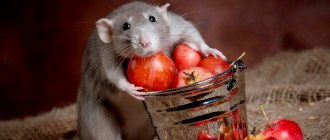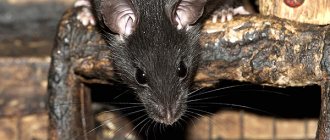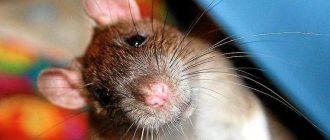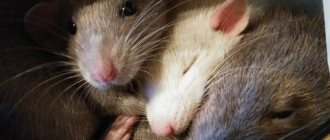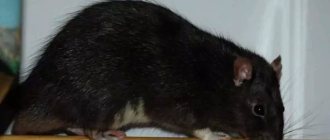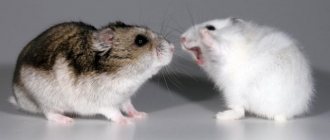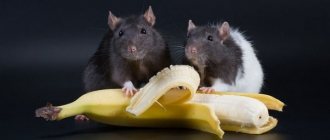Decorative rodents are tiny, cute animals with a good-natured character and funny habits. They do not take up much space and do not create a mess in the apartment; even a child can easily handle them. And in order not to get confused in the available variety and make the right choice, you need to find out in advance which rodents are better than others for home keeping.
Why is it worth buying a rodent for your home?
Any, even the most unpretentious pets at first glance require care: proper nutrition, timely medical care, provision of the “correct” living conditions, education and training. The only question is how much time and finances have to be spent on providing appropriate care.
The dog needs frequent walks. And walking with four-legged pets is not only a pleasant pastime in the fresh air, but also constant washing of paws, examinations for ticks, treatment for minor cuts and other injuries.
In addition, dogs require mandatory training. Yes, yes, even small decorative dogs taken into the home solely “for pleasure” should know the boundaries of what is acceptable and have a clear idea of what is allowed and what is not allowed.
Cats, unlike dogs, do not require obligatory walking and, in general, behave more independently. However, at the same time, many pet owners note the waywardness or even “capriciousness” of their pets.
If a dog is a pack animal and therefore requires constant communication, then cats most often behave like loners. Yes, the cat can climb onto your lap or “ask” for attention, but he will only do this when he wants. Cats carefully respect their personal boundaries. The scars on the hands of their owners are further confirmation of this.
Parrots and other feathered pets do not require as much space as cats and dogs. However, they need almost the same amount of attention. Parrots are sociable guys, which means that they definitely need an “interlocutor.” If you don't have time to play with your pet, you will have to get two birds at once - but in this case you may turn out to be a “third wheel” for them.
The fish are too “asocial” and require special care. Aquarium keeping is a serious hobby, often expensive and requiring certain skills. Before acquiring a “real” aquarium, a beginner will have to get his hands on less demanding pets.
- Top 7 aquarium fish for beginners
Do you dream of aquarium fish, but are you afraid of not being able to cope? Let's talk about the easiest types and breeds to care for.
Turtles , both waterfowl and land ones, require special conditions of detention. Correct levels of humidity and air temperature, absence of drafts, a certain ventilation regime - ensuring all this may not be as simple as it seems at first glance.
At the same time, domestic rodents do not require as much communication as dogs, do not behave as capricious as cats, do not make noise like parrots, and do not require special conditions like fish or turtles.
Do not think that the list of domestic rodents is limited to hamsters and guinea pigs. In reality there are many more. Let's talk about the most popular ones.
Popular pet rodents
The most popular species that are suitable as pets include hamsters, mice, rats, chinchillas, guinea pigs, gerbils, chipmunks and degus. They all differ from each other in appearance and have their own characteristics.
Decorative mouse
She is a relative of the common house mouse and one of the most popular pets. The decorative mouse is ideal for those who cannot have a large animal, but dream of a four-legged pet.
The domestic rodent is easily tamed and is able to distinguish its owner from other people. He willingly climbs into your arms, but has the ability to cleverly hide.
On a note. House mice emit a specific odor that cannot be eliminated even with thorough cleaning. Therefore, it is not recommended for allergy sufferers.
Decorative rat
These are very smart and loyal pet rodents. They love company and try in every possible way to attract the attention of their owners.
Decorative rats do not want to run away and are easy to train. They can be trained to respond to their nickname and follow basic commands like “Home!” or “Come to me!”
These pet rodents love to sit on their owner's shoulder and communicate through squeaks.
Rats are very clean and very quiet animals. They are relatively quiet and with regular care will not smell unpleasant.
Degu
These are small domestic rodents, similar to jerboas. They are small in size and weigh only 200-300 g with a body length of about 30 cm. And their hard, dense fur is colored chestnut-gray or brown-yellow. Degus easily adapt to apartment living and live in captivity for 6-8 years.
These exotic ornamental animals are easy to care for. But for a comfortable stay they need various labyrinths, burrows, houses and sand baths.
Interesting! Degus have several alternative names. They are often called Chilean squirrels or bush rats.
Chipmunk
This miniature animal weighs up to 130 g with a body length of no more than 15 cm. It has a memorable appearance and stands out from the rest by the presence of 9 longitudinal stripes on its back, which are colored dark and light.
The rodent does not get along well with its fellows and needs a separate cage. The chipmunk is very clean and easily learns to relieve itself in a strictly designated place.
Gerbil
Scientists know more than 100 species of gerbils. But only representatives of the Mongolian species can be tamed. The size of gerbils varies from 5-20 cm, and their weight is 15-200 g.
These rodents have a short sandy coat and a neat tuft at the tip of the tail, along the entire length of which a thin fluff grows. In natural conditions, gerbils live in families.
Loneliness is bad for the health of these animals, so it is better to keep them in pairs. These rodents have a friendly disposition.
On a note. Active and curious pets are constantly on the move and create a lot of noise. They enjoy dragging their toys around and throwing their food around. Therefore, you can have a gerbil at home only if the potential owners do not like silence and are not lazy to clean.
Guinea pig
These are very sociable and social rodents. Pets need constant attention from their owners and do not tolerate loneliness well. Guinea pigs are very vulnerable, but get along well with same-sex relatives.
Unpretentious and trusting domestic rodents are peaceful towards people and are considered the safest pets for preschool children.
Chinchilla
These large domestic rodents have a soft, pleasant to the touch coat of a beautiful gray color. They are nocturnal and have a cautious, timid disposition. Chinchillas do not require specific care, but they do need a spacious cage with shelves.
Chinchilla
On a note. Chinchillas do not have sweat or sebaceous glands, so they do not emit a specific odor. These pet rodents do not shed and are considered hypoallergenic animals.
Hamster
These touching and funny pets are active at night and do not like to share territory with their brothers.
Hamsters are easy to tame, but if handled incorrectly, they become capricious and disobedient.
Other rodents
Not all types of ornamental rodents are in equal demand. Less popular, but very interesting varieties include:
- Squirrels. These agile and fast long-tailed animals with black shiny eyes are easy to tame and become attached to people. Fluffy pet rodents need a spacious home and change their coat twice a year. If you provide squirrels with adequate nutrition and good care, they can live up to 15 years.
- Sony. These small animals resemble both squirrels and mice at the same time. Small domestic rodents readily make contact and are well tamed. Active and mobile dormice need a spacious cage with shelves, ladders, etc.
- Jerboas. These tiny mouse-like animals have a funny appearance. Jerboas are easily recognized by their huge ears, long hind legs and jumping style of movement. These domestic rodents have a harmless, affectionate disposition and easily get used to being handled.
- Rabbits. These domestic rodents are endowed with a sociable disposition and need constant interaction with people. Decorative rabbits easily get used to the tray and can walk on a harness with a leash.
- Marmots. These large domestic rodents are very curious and intelligent. Smart and active marmots easily make contact with people and are quite amenable to training. They eat vegetables and fruits, but enjoy eating grains. To keep a groundhog, it is better to choose a spacious cage with several complex locks. Otherwise, there is a risk that an enterprising domestic rodent will cope with a simple deadbolt and go traveling around the apartment.
Squirrel in a winter coat
Red squirrel
Sonya
Jerboa
Decorative rabbits
Marmots
Syrian (golden) hamster
Syrian, also known as golden, or Western Asian hamsters are small animals with a length of 13 to 14 cm, of which approximately 1.5 cm is in the tail. Weight – 100-125 g. They are omnivores, in natural conditions they feed on seeds, nuts and some insects (ants, flies, wasps, cockroaches). In captivity they can live up to 3-4 years. The color can be golden, white, black, silver or brown.
A solitary animal that does not require a partner for communication, but easily finds a common language with its owner.
Hamsters as pets
Syrian or golden hamsters live approximately two to three years. Hamsters are introverts: they do well alone in an appropriately sized cage. Because Hamsters can be quite active, so the larger the cage area, the more pleasant it is for the animal.
If the Syrian hamster has been tamed since childhood, then, as a rule, it has an easy-going character; if he has been away from human contact for a long time, he may behave ill-mannered: bite or attack if, for example, you wake him up in the middle of the day. Hamsters are very fragile and small creatures, so they require extremely careful handling.
Children should sit on the floor when interacting with animals and be supervised while playing with the pet. Overall, hamsters are a good choice for their owner, and they don't need a whole group of other rodents to make them feel comfortable.
Djungarian hamster
A miniature rodent up to 10 cm long and weighing up to 65 g. Life expectancy is 10-12 months in the wild, and about 2-2.5 years in captivity (some individuals live up to four years). There are several color options - brown-gray (standard), gray-bluish (sapphire), matte white with gray intervals (pearl), red-cream (mandarin).
A distinctive feature is a dark strip of fur along the spine. It is curious that in winter the animals molt, and their fur becomes almost completely white.
They get along well in the same cage with representatives of their species.
Chinese hamster
Chinese hamsters differ from their relatives from the Hamster family by their more elongated body proportions.
Young individuals are not very flexible, but if the animal is often communicated with, it very quickly gets used to being handled and even becomes attached to its owners. At the same time, Chinese hamsters do not get along well with their relatives. This is especially true for males, who have a habit of constantly entering into conflict due to the fact that they cannot divide the territory.
There are three types of color: gray (the so-called wild type), spotted white, white (a rather rare variety). They are known for their speed and resourcefulness, so such pets should be kept in a cage with a small distance between the bars. Some owners even set up a special aquarium for them.
Fancy Mouse
Fancy Mouse
The fancy mouse is a great pet for those who don't like noisy dogs or arrogant cats. A domesticated mouse can be tamed and become very friendly towards its owner, but less fearful or aggressive. Female mice live well in small groups or with other mice, while male mice tend to fight among themselves due to their natural competitive tendencies.
Clawed (Mongolian) gerbil
The gerbil looks like a mouse with a tassel on its tail. They are noticeably different in size from hamsters. Male gerbils can reach a length of 20 cm. It is curious that in captivity, males behave more friendly than females, while females are more active.
In the wild, gerbils live in groups consisting of one male and 2-3 females. Females and males care for the cubs together, however, as soon as the babies grow up, the parents “drive” them away from their territory.
On a note! The best food for gerbils is specially formulated mixtures for rodents. Cabbage, peas, potatoes, sour or too sweet fruits are strictly prohibited. Sometimes protein is added to the diet (egg whites, beetle larvae).
How to choose a rodent for an adult?
Before purchasing a rodent for home keeping, there are several factors to consider:
- Apartment size. It should be clear that you cannot bring a large pet into a small apartment, but on the contrary, you can.
- Price. Before you get a rodent, you need to calculate the approximate cost of keeping it so that there are no unwanted surprises later.
- Possible difficulties. Animals should not be owned by people who do not need unnecessary problems and troubles around the house. For example, regular hair removal or cage cleaning.
- Allergy test. You need to find out if someone is allergic, so as not to get into an unpleasant situation.
- Lifestyle. Rodents are mostly nocturnal animals. We must honestly answer the question: “Will this stop me?”
In conclusion, it must be said that each person selects an animal to suit his lifestyle and temperament. Who, no matter how small a creature, will instill love and make you smile?
Decorative mouse
Decorative mice are, in essence, distant relatives of the well-known house mice (yes, the same ones that have the habit of settling not far from human homes and often “peeping into the light” of country houses in the autumn-winter period).
The only difference between such mice and their wild relatives is their colors - they are not found in nature.
Mice are social animals, so it is best to keep them in pairs or groups consisting of only females. Males will almost certainly not be able to live with each other.
African dormouse
African dormouse
The African dormouse looks like a small, furry version of our beloved squirrels and shares many similarities with its furry cousins, such as playfulness and agility. They are extremely playful creatures that love to play freely and even run away if given the chance.
If you want to keep one of these squirrels in your home, all you need to do is find a suitable box or cage that is secure enough to prevent him from escaping, while at the same time providing him with things to keep him entertained and occupied. your new pet.
Domesticated rat
Unlike their wild ancestors, modern domesticated rats are practically not afraid of people and willingly make contact. These are smart animals with a calm and “non-conflict” character.
Like any social creatures, they require constant communication, so in the absence of a “companion” they may begin to experience psychological stress. However, as practice shows, rats very quickly find a common language with humans and, if the latter pays enough attention to the animal, it becomes a faithful and devoted pet.
Guinea pig
In terms of size, guinea pigs are noticeably larger than other domestic rodents. Body length can reach 25-35 cm, weight - 1-1.5 kg (for males) and 0.8-1.2 kg (for females).
Unlike mice and hamsters, which have an average lifespan of 2-3 years, guinea pigs quite often live to a “venerable” 5-7, or even 9 years. They are famous for their flexible nature and peacefulness. It is quite difficult to “irritate” this animal, which is perhaps why they are often taken as pets to families with children.
There are a large number of different breeds of guinea pigs, which differ from each other in length, structure and coat color. When purchasing such an animal for your family, first check the nutritional recommendations, since the menu may vary depending on the breed. For example, hairless guinea pigs are recommended to add more grain to their food, because... they have to spend a lot of energy to maintain the desired body temperature. At the same time, “regular” guinea pigs are given grain in limited quantities, since the high starch content in this product can lead to obesity.
How to choose a rodent for a child?
In order to instill a love for small creatures, children are often given rodents as pets. But before purchasing a pet, you must take into account the age of the child. It is important to remember that under 3 years of age no animals should be owned under any circumstances, since at this time the baby is actively learning about the world around him and can cause significant harm. For example, he will show unwanted care by feeding the animal food that is dangerous for it. To prevent this from happening, parents need to raise their child more strictly, explaining what is good and what is bad. From about 5 years old, you can think about buying a pet rodent.
Chinchilla
Chinchillas are active animals, which means that they need spacious and, preferably, multi-level cages where the rodent can freely perform its “acrobatic studies”. Separately, it is worth mentioning the care of your pet’s fur. A chinchilla should be given a so-called dust bath several times a week. To do this, sand is poured into a relatively deep container, for example, a deep cat litter box, or better yet, a special powder in which the animal falls out, cleaning itself.
Young chinchillas very quickly get used to a person, but not so much as to allow him to constantly carry them in his arms. He is unlikely to make a companion animal.
Maintenance cost
You also need to find out how expensive it is to maintain a particular animal. After all, equipping a terrarium for a turtle or an exotic lizard will cost a decent amount. And puppies and kittens are not cheap at all, but you also need to think about the costs of vaccination and possible treatment.
Aviary for chinchilla
Everything needs to be taken into account: necessary equipment, nutrition, treatment, care.
African dormouse
It is a rare pet that can compete in agility and agility with the African dormouse. This animal is considered very active and restless even by rodent standards, so you can keep it in an apartment only if you can provide it with complete safety. There are known cases when animals ran away even from seemingly completely impregnable cages, hiding from their owners throughout the apartment for days.
Therefore, African dormice are often recommended to be kept in a terrarium with a well-closed lid. The diet of these animals is noticeably different from the menu of other rodents. While hamsters, mice and guinea pigs base their menu on plant foods, African dormouse prefer food of animal origin - small insects, mealworms, eggs. However, plant foods cannot be completely excluded from the diet.
Common Degu
Common Degu
When it comes to rodents, degus are a little different from typical lab rats. In the wild, they live in colonies of up to 100 individuals and love to be around people. If you're looking for new friends to cuddle with, these sociable animals are perfect for you. If you're looking for an adorable pet that enjoys living in a big family like rabbits do, then these little furbabies have it all.
Rodents make great pets, and having one at home will definitely make your life more lively and enjoyable. Share your experience with us if you are a rodent owner.
Degu (Chilean squirrel, bush rat)
Relatively large rodents with a body length of 9 to 12 cm, of which about 7-9 cm “goes” to the tail. These are very social animals that get along well with each other, but it is still not recommended to breed them in large groups, since the rodent needs a lot of space for full development. The best option is to house a couple of degus of the same sex - this way the pets won’t get bored, and you won’t have to look for owners for numerous offspring.
Unlike guinea pigs, degus do not like to be treated freely and can bite strongly, therefore, when choosing a rodent for a family with small children, you should give preference to a more peaceful and phlegmatic animal.
If you have long wanted to have a pet, but doubt that you will be able to pay enough attention to it, start with a rodent. So, within a few months after purchasing the animal, you will understand whether your lifestyle allows you to take responsibility for a more “demanding” pet.
Life style
Probably the most important thing is that your future pet matches your lifestyle (are you a homebody or, on the contrary, like to travel). The animal is completely dependent on you, so if your work involves constant business travel, it is better not to take an animal.
Another important factor that is worth paying attention to is your attitude towards household chores. Let's face it: Almost every animal leaves a lot of trash . Animals molt, fur and feathers must be collected with a vacuum cleaner, and scales must be swept away. It is necessary to regularly clean litter boxes, cages, and aquariums.
If you like a clean, hassle-free home but want a pet, consider getting a gerbil, fish, or small bird that will happily live in a small cage or aquarium.

